Sodium acetate trihydrate
Synonym(s):Acetic Acid Sodium Salt;Acetic acid sodium salt trihydrate;Sodium acetate trihydrate
- CAS NO.:6131-90-4
- Empirical Formula: C2H9NaO5
- Molecular Weight: 136.08
- MDL number: MFCD00071557
- EINECS: 612-115-9
- SAFETY DATA SHEET (SDS)
- Update Date: 2025-09-25 17:15:13
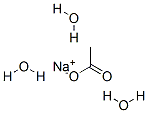
What is Sodium acetate trihydrate?
Chemical properties
Sodium acetate trihydrate is the trihydrate sodium salt oaf acetic acid. It is a colorless, odorless crystals that can be weathered in the air. Soluble in water and ether, pH of 0.1M aqueous solution is 8.9. moderately soluble in ethanol, 5.3 g/100mL. Anhydrous Sodium acetate occurs as colorless, transparent crystals or a granular crystalline powder with a slight acetic acid odor.
The Uses of Sodium acetate trihydrate
Sodium acetate trihydrate is used in various applications. It is used as a buffer of a pH range in between to 4.0 to 6.0. It is also used in the purification and precipitation of nucleic acids and in protein crystallization. It is used as a mordant dyeing, as a pickling agent in chrome tanning, as a neutralizer in waste streams containing sulfuric acid, in the textile industry and as a photoresist while using aniline dyes. It plays an important role to retard vulcanization of chloroprene in synthetic rubber production. It is a precursor to prepare ester from alkyl halide. Other applications are in photography, as an additive to food, in purification of glucose, in preservation of meat, in tanning, and as a dehydrating agent. In analytical chemistry it is used to prepare buffer solution.
What are the applications of Application
Sodium acetate trihydrate is for precipitation of nucleic acids and preparing gel stains for protein gel electrophoresis
Preparation
Sodium acetate is prepared by reacting sodium hydroxide or sodium carbonate with acetic acid in aqueous solution. The solution is evaporated to obtain hydrated crystals of sodium acetate.
NaOH + CH3COOH → CH3COONa + H2O
Na2CO3 + CH3COOH → 2CH3COONa + CO2 + H2O
Definition
ChEBI: Sodium acetate trihydrate is a hydrate. It contains a sodium acetate.
General Description
Sodium acetate trihydrate can be obtained from the crystallization of sodium acetate in water. On heating at 75°C, it melts, while on heating above 120°C it loses water of crystallization and gets converted into anhydrous form. The hyperfine proton and 13C splittings have been evaluated by recording ESR spectra of its irradiated single crystals. ESR studies suggested the existence of trapped methyl radicals. Its crystals are monoclinic and its crystal structure has been investigated by photographic methods. Unit cell parameters were evaluated.
Pharmaceutical Applications
Sodium acetate is used as part of a buffer system when combined with acetic acid in various intramuscular, intravenous, topical, ophthalmic, nasal, oral, otic, and subcutaneous formulations. It may be used to reduce the bitterness of oral pharmaceuticals. It can be used to enhance the antimicrobial properties of formulations; it has been shown to inhibit the growth of S. aureus and E. coli, but not C. albicans in protein hydrolysate solutions. It is widely used in the food industry as a preservative. Sodium acetate has also been used therapeutically for the treatment of metabolic acidosis in premature infants, and in hemodialysis solutions.
Biochem/physiol Actions
Sodium acetate trihydrate (SAT) is a phase change material (PCM) that can be easily combined with the preparation of domestic hot water, space heating, solar heating, and radiant floor heating systems. The hydrated salt of SAT possesses high latent heat density and thus can be used for low-temperature heat storage.
Safety
Sodium acetate is widely used in cosmetics, foods, and pharmaceutical
formulations, and is generally regarded as a
nontoxic and nonirritant material.
A short-term feeding study in chickens with a diet supplemented
with 5.44% sodium acetate showed reduced growth rates that were attributed to the sodium content.(9) Sodium acetate is poisonous if
injected intravenously, is moderately toxic by ingestion, and is an
irritant to the skin and eyes.
LD50 (rat, oral): 3.53 g/kg
LD50 (mouse, IV): 0.38 g/kg
LD50 (mouse, SC): 8.0 g/kg
Description
Sodium acetate trihydrate is a hydrate. A moderately water-soluble crystalline sodium source decomposes to sodium oxide when heated. It is generally immediately available in most volumes. All metallic acetates are inorganic salts containing a metal cation and the acetate anion, a univalent (-1 charge) polyatomic ion composed of two carbon atoms ionically bound to three hydrogen and two oxygen atoms. The trihydrate sodium salt of acetic acid is used as a source of sodium ions in solutions for dialysis and as a systemic and urinary alkalizer, diuretic, and expectorant.
Storage
Sodium acetate should be stored in airtight containers.
Incompatibilities
Sodium acetate reacts with acidic and basic components. It will react violently with fluorine, potassium nitrate, and diketene.
Regulatory Status
GRAS listed. Accepted as a food additive in Europe. Included in the FDA Inactive Ingredients Database (injections, nasal, otic, ophthalmic, and oral preparations).
References
[1] http://www.europlat.org
[2] http://www.rxlist.com/sodium-acetate-drug.htm
[3] http://cosmetics.specialchem.com
[4] http://cecri.csircentral.net/2710/1/036-96.pdf
Properties of Sodium acetate trihydrate
| Melting point: | 58 °C |
| Boiling point: | >400°C |
| Density | 1,45 g/cm3 |
| Flash point: | >250°C |
| storage temp. | Store at +5°C to +30°C. |
| solubility | H2O: 3 M at 20 °C, clear, colorless |
| form | Solid |
| color | White |
| Odor | Slight acetic acid |
| PH | 7.5-9.0 (25℃, 50mg/mL in H2O) |
| pka | 4.76 (acetic acid)(at 25℃) |
| PH Range | 8.5 - 10 at 408 g/l at 25 °C |
| Water Solubility | 762 g/L (20 ºC) |
| λmax | λ: 260 nm Amax: ≤0.01 λ: 280 nm Amax: ≤0.01 |
| Merck | 14,8571 |
| BRN | 3732037 |
| Stability: | Stable. Incompatible with strong oxidizing agents, halogens. |
| CAS DataBase Reference | 6131-90-4(CAS DataBase Reference) |
| NIST Chemistry Reference | Sodium acetate trihydrate(6131-90-4) |
| EPA Substance Registry System | Acetic acid, sodium salt, trihydrate (6131-90-4) |
Safety information for Sodium acetate trihydrate
Computed Descriptors for Sodium acetate trihydrate
| InChIKey | AYRVGWHSXIMRAB-UHFFFAOYSA-M |
Sodium acetate trihydrate manufacturer
JSK Chemicals
Imperial Chem Incorporation
ASM Organics
JKM Chemtrade
Aashi Chem
Lakshita Chemicals
New Products
4,4-Difluoropiperidine hydrochloride tert-butyl 9-methoxy-3-azaspiro[5.5]undecane-3-carboxylate Indole Methyl Resin N-Isopropylurea N,N-Dicyclohexylcarbodiimide(DCC) MELDRUMS ACID 5-METHYLISOXAZOLE-4-CARBOXYLIC ACID Magnessium Bis glycinate Zinc ascorbate 1-bromo-2-butyne 2-acetamidophenol 9(10H)-anthracenone Erythrosin B, 4-Piperidinopiperidine 2-((4-morpholinophenylamino) (methylthio) methylene) malononitrile 2,4-dihydroxybenzaldehyde 3-(4-morpholinophenylamino)-5-amino-1H-pyrazole-4-carbonitrile Methyl 2-methylquinoline-6-carboxylate 2,6-dichloro-4-nitropyridine 4-Bromo-2-chlorobenzonitrile 2-(benzylamino)acetic acid hydrochloride 4-(tert-Butoxycarbonylamino)but- 2-ynoic acid 3,4-dihydro-2H-benzo[b][1,4]dioxepine 1-Phenyl-1-cycloprppanecarboxylicacidRelated products of tetrahydrofuran
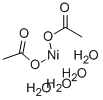



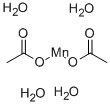



You may like
-
 Sodium Acetate Trihydrate 99%View Details
Sodium Acetate Trihydrate 99%View Details -
 Sodium Acetate Trihydrate 99%View Details
Sodium Acetate Trihydrate 99%View Details -
 Sodium acetate trihydrate 99%View Details
Sodium acetate trihydrate 99%View Details -
 Sodium Acetate Trihydrate/Anhydrous 99%View Details
Sodium Acetate Trihydrate/Anhydrous 99%View Details -
 Sodium acetate trihydrate 98%View Details
Sodium acetate trihydrate 98%View Details -
 Sodium acetate trihydrate, 98% 99%View Details
Sodium acetate trihydrate, 98% 99%View Details -
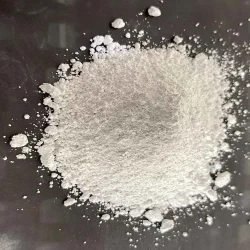 White Sodium Acetate Trihydrate IP BP USP ACS LR ARView Details
White Sodium Acetate Trihydrate IP BP USP ACS LR ARView Details
127-09-3 -
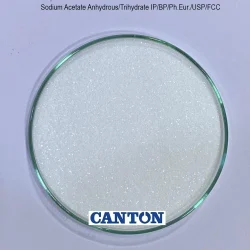 Sodium Acetate TrihydrateView Details
Sodium Acetate TrihydrateView Details
127-09-3
